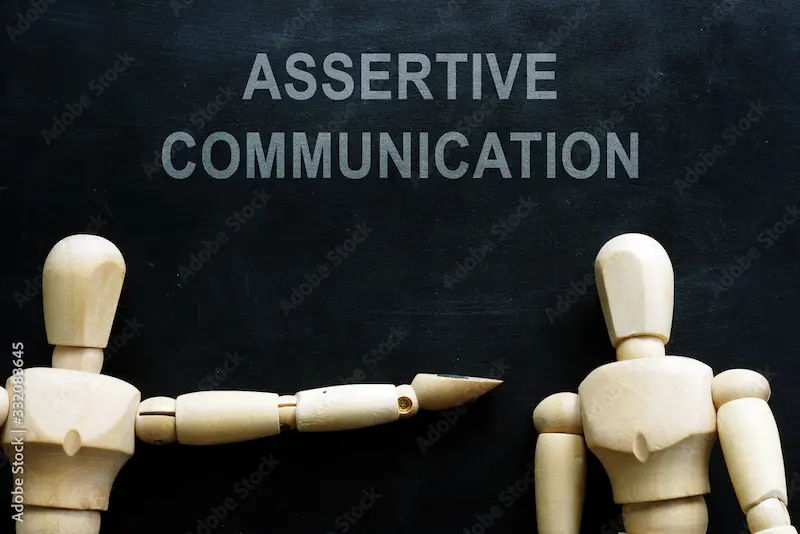PMS and Mental Health: Symptoms, Causes, and Real Relief
Know about the PMS & mental health. Difference between pms, pmdd and pme. Causes, effects on different life stages, treatment options, and more.

Written by Dr. M L Ezhilarasan
Reviewed by Dr. Shaik Abdul Kalam MD (Physician)
Last updated on 15th Oct, 2025

Introduction
If your mood and energy plummet before your period, you are not alone. Premenstrual syndrome (PMS) can affect how you think, feel, sleep, and relate to others. For some, the mental health impact rises to premenstrual dysphoric disorder (PMDD), a more severe form with intense irritability, anxiety, or depression in the luteal phase (the two weeks before bleeding). The good news: relief is possible when you understand the patterns and use strategies that match your biology. In this guide, we connect PMS and mental health in a practical, compassionate way. You’ll learn how to spot patterns, separate PMS from PMDD and premenstrual exacerbation (PME) of existing conditions, and use evidence-based treatments—from sleep and nutrition to therapy, SSRIs, and hormonal options. Wherever you are on your journey, this is your step-by-step map to feeling better and living well.
PMS, PMDD, and Your Mental Health: The Big Picture
PMS refers to recurrent physical, emotional, and behavioural symptoms that appear in the luteal phase and resolve soon after menstruation starts. Up to 75% of menstruating people report some premenstrual symptoms; for about 20–30%, these symptoms affect daily functioning.
PMDD is a more severe, cyclical mood disorder affecting about 3–8%, characterised by intense irritability, mood swings, anxiety, or depressed mood with marked impairment in work, school, or relationships.
Consult a Top Gynaecologist for Personalised Advice
PMS vs PMDD vs PME (Premenstrual Exacerbation)
PMS causes discomfort; PMDD causes disability. PMDD requires a specific number and pattern of symptoms in the luteal phase, with symptom resolution shortly after menses begins.
Premenstrual exacerbation (PME) occurs when a baseline condition (e.g., generalised anxiety disorder, depression, ADHD, bipolar disorder) worsens premenstrually. Distinguishing PMDD from PME matters because treatment may differ (e.g., managing bipolar disorder carefully before adding antidepressants).
How common is it—and why it matters for daily life?
PMS and PMDD can impact attendance, productivity, relationships, and self-esteem. Research shows PMDD is associated with higher rates of functional impairment and increased risk of suicidality during symptomatic days, making early recognition and treatment crucial. If symptoms feel out of proportion or disrupt your life, you deserve targeted support and a plan.
Symptoms and Patterns to Watch
The symptoms are further divided as:
Emotional and cognitive signs (mood swings, irritability, brain fog)
Common emotional symptoms include irritability, anger, anxiety, sadness, crying spells, and feeling overwhelmed. Cognitive changes like brain fog, difficulty concentrating, and indecisiveness are also typical.
In PMDD, at least one core mood symptom (e.g., marked mood lability, irritability/anger, depressed mood, anxiety) must be present and severe enough to interfere with functioning. Many people describe this time as “not myself,” which can be a helpful internal cue.
Physical and behavioural signs (sleep, appetite, energy)
Physical symptoms include bloating, breast tenderness, headaches, joint/muscle aches—often travel with behavioural shifts like sleep disruption (insomnia or hypersomnia), carbohydrate cravings, and fatigue. Tracking both mental and physical symptoms helps reveal patterns, which is key for targeting interventions (e.g., magnesium for bloating, sleep hygiene for insomnia).
Red flags that need urgent help
Seek urgent help if you have suicidal thoughts, self-harm urges, or feel unable to keep yourself safe. PMDD can present intense, time-limited distress; safety planning and rapid support are essential. If symptoms persist beyond two weeks or are severe, consult a doctor online with Apollo24|7 for further evaluation and immediate support.
Why It Happens: Hormones, Brain Chemistry, and Stress
The role of hormones, brain and stress:
Hormone sensitivity and the role of allopregnanolone
PMS and PMDD are not about “too much” or “too little” estrogen or progesterone. Rather, many individuals are unusually sensitive to normal hormonal changes. A key player is allopregnanolone, a neurosteroid derived from progesterone that modulates GABA receptors. In sensitive brains, the late-luteal drop in allopregnanolone may trigger anxiety, irritability, or low mood. Unique insight: Think of it as a “volume knob” for brain calming signals when hormones shift, the knob suddenly turns down for sensitive individuals.
Serotonin, GABA, inflammation, and circadian rhythm
Serotonin activity fluctuates across the cycle, which helps explain why SSRIs often work quickly for PMDD (sometimes within days). GABA modulation by allopregnanolone influences anxiety and sleep.
Emerging research suggests low-grade inflammation and circadian rhythm disruption (irregular sleep/wake patterns, light exposure) may amplify symptoms. Supporting circadian habits (consistent sleep and daylight exposure) can reduce vulnerability.
Risk factors and common comorbidities (ADHD, anxiety, depression)
Family history of PMS/PMDD, personal history of mood/anxiety disorders, trauma, and high stress may raise risk.
Neurodivergent individuals (e.g., ADHD, autism) often report amplified premenstrual emotional reactivity and executive dysfunction—a form of PME that improves with tailored support (structure, reminders, and targeted therapy).
Getting a Diagnosis and Tracking What Matters
The diagnosis and tools include:
Simple tracking tools: calendars, apps, and symptom diaries
Two cycles of daily tracking separate PMS/PMDD from other conditions. To track the progress; Use a paper calendar, spreadsheet, or PMDD-specific apps to note symptoms, severity (0–3), and timing relative to ovulation and menses.
Mark sleep, caffeine/alcohol, stressors, and coping strategies—these reveal triggers and wins.
PMDD criteria (DSM-5) and ruling out other causes
DSM-5 PMDD requires at least five symptoms in most cycles, with one core mood symptom (mood swings, irritability/anger, depressed mood, anxiety), clear premenstrual onset, resolution after menses starts, and clinically significant distress/impairment.
Differential diagnosis includes MDD, GAD, bipolar disorder (watch for hypomania/mania), thyroid disorders, anaemia, and perimenopause transition [NIMH, 2023; ACOG, 2023].
Lab checks, why & what they indicate for thyroid, iron & vitamin D.
There’s no “PMS blood test,” but labs help rule out contributors:
TSH/free T4 (thyroid) for fatigue, mood changes
Ferritin (iron stores) for fatigue/brain fog
Vitamin D for mood/energy support
Consider B12 if dietary risk or neurological symptoms
Apollo24|7 offers convenient home collection for tests like thyroid panel, ferritin, and vitamin D.
When to consult a clinician (online or in person)
If symptoms impair daily life for two or more cycles—or if there are red flags—seek care. A clinician can confirm PMDD vs PME, discuss treatment, and coordinate mental health support. If your condition does not improve after trying these methods, book a physical visit to a doctor with Apollo24|7.
Treatment That Works: A Stepwise, Evidence-Based Plan
The treatment, lifestyle modifications include:
Lifestyle foundations: sleep, movement, nutrition, and supplements
Start with consistent sleep (7–9 hours, regular timing) and daily movement (150 minutes/week moderate exercise). Exercise regularly, as it reduces anxiety and improves sleep quality.
Nutrition: prioritise protein and fibre, steady complex carbs, and limit alcohol/caffeine when sensitive.
Evidence supports:
Calcium 1,000–1,200 mg/day for global PMS symptoms (several RCTs show benefit)
Magnesium 200–360 mg/day may help with bloating, breast tenderness, and mood; use glycinate/citrate to reduce GI side effects.
Vitamin B6 (pyridoxine) up to 50–100 mg/day may help mood; avoid higher chronic doses due to neuropathy risk.
Omega-3s (EPA/DHA) show modest benefit for mood and cramps.
Psychological therapies: CBT, mindfulness, and group support
CBT for PMDD targets thought patterns (“I’ll never cope”) and behaviours (avoidance, conflict) and incorporates cycle-aware planning. Trials show CBT improves function and reduces symptom severity; effects can be similar to pharmacologic options for some individuals, especially when combined with lifestyle strategies. Mindfulness training lowers reactivity to hormonal shifts. Consider group therapy or skills groups (e.g., DBT skills), especially for anger/impulsivity.
Medications: SSRIs/SNRIs, hormonal options, and advanced therapies
SSRIs (fluoxetine, sertraline, paroxetine, escitalopram) are first-line for PMDD; they can be used continuously or just during the luteal phase (often starting ovulation day+14) with rapid benefit. SNRIs (venlafaxine) may help if SSRIs are not tolerated. Hormonal options: drospirenone/ethinyl estradiol combined pills (24/4 regimen) can stabilise fluctuations and reduce PMDD symptoms; continuous/extended-cycle dosing is sometimes used. Spironolactone may reduce bloating/breast tenderness. For severe, refractory cases, GnRH agonists with add-back therapy or, rarely, surgical options are considered under specialist care. Important: If there is any history of bipolar disorder, involve a psychiatrist before taking antidepressants.
Integrative options: light therapy, yoga, and what to know
Bright light therapy (morning light 10,000 lux) may help mood and sleep in the luteal phase; evidence is promising but limited. Yoga and mindful movement support stress regulation. Acupuncture evidence is mixed; if used, integrate with core therapies. Unique insight: Create a “luteal routine”—15–20 minutes of light exposure, a short walk, and a calming practice daily for two weeks—small, consistent habits can yield outsized benefits over your cycle.
Living Well with PMS: Protecting Your Mental Health
Cycle-centred planning at work/school, and at home
Use your symptom data to “symphony schedule.” Front-load cognitively demanding tasks in the follicular phase and shift to routine or collaborative work late luteal. Build buffer days for rest and admin tasks. Prepare “energy kits” (protein snack, water, headphones, heat wrap) for symptom days. Long-tail keyword: cycle tracking app for PMDD.
Communication, boundaries, and relationship care
Explain patterns to partners and close colleagues: “I’m on day 25 and may be shorter-tempered—if I step away, I’m taking space, not withdrawing.” Pre-plan scripts and signals. Protect sleep and limit last-minute commitments. Enlist help for chores during two high-symptom days and swap favours later.
Creating a personal crisis/safety plan for PMDD
Write a 1-page plan: warning signs, people to contact, coping steps (breathing, music, shower, walk), crisis numbers, and emergency options. Remove access to means if suicidal thoughts emerge. If symptoms persist beyond two weeks, consult a doctor online with Apollo24|7 for further evaluation. In an immediate crisis, contact local emergency services or a suicide hotline in your country.
Special Situations Across the Lifespan
The influence of PMS on individual stages of the lifespan:
Teens and young adults
Adolescents may struggle to distinguish PMS from normal puberty shifts. Emphasise tracking, sleep, and school accommodations (test timing, absence policies). Consider early counselling if mood symptoms are strong.
Perimenopause and the hormonal transition
Fluctuations intensify in perimenopause; those with earlier PMS may experience worsening luteal symptoms. Options include CBT, SSRIs/SNRIs, and, with clinician guidance, continuous hormonal regimens.
PMS with ADHD, bipolar disorder, and postpartum changes
ADHD symptoms (working memory, impulse control) often worsen premenstrually—optimise ADHD treatment and add cycle structure. For bipolar disorder, coordinate care closely; avoid unmonitored antidepressants. Postpartum hormonal shifts can temporarily change cycles and symptom patterns; track and review with your clinician.
Conclusions
PMS can strain your mood, focus, relationships, and confidence—yet it follows a pattern that you can learn and manage. By naming what’s happening (PMS, PMDD, or PME), tracking symptoms for two cycles, and applying a stepwise plan, you can turn chaotic weeks into a more predictable rhythm. Start with fundamentals—steady sleep, regular movement, and balanced meals—then layer in targeted changes like calcium or magnesium, CBT skills, or, if needed, medications such as SSRIs or a drospirenone-containing pill. This is not a one-size-fits-all journey; it’s a personalised toolkit that evolves with your cycle and life stage.
If symptoms are severe, last longer than two weeks, or disrupt daily life, connect with a clinician. An online consultation with Apollo24|7 can help you clarify diagnosis, order labs (thyroid, ferritin, vitamin D) via home collection, and build a tailored care plan. If your condition does not improve after trying these methods, book a physical visit to a doctor with Apollo24|7.
Consult a Top Gynaecologist for Personalised Advice
Consult a Top Gynaecologist for Personalised Advice

Dr. Jasmine Sarah Abraham
Obstetrician and Gynaecologist
14 Years • MBBS, MS (Obstetrics & Gynaecology), MRCOG (Obstetrics & Gynaecology) (Fellowship in Minimal Invasive Surgery (Gynaecology)
Bengaluru
Unicorn Multi-Speciality Clinic, Bengaluru

Dr Homeira Nishat
Obstetrician and Gynaecologist
34 Years • MBBS, Diploma in Obstetrics & Gynaecology
Bengaluru
Cure Hospital and Clinic, Bengaluru

Dr. Ritika Khurana
Obstetrician and Gynaecologist
16 Years • MBBS, DGO(GYNAECOLOGY AND OBSTETRICS)
Pune
Dr Rupali and Dr Ritika, Pune

Dr. Saheli Kapat
Obstetrician and Gynaecologist
11 Years • MBBS, DNB Obstetrics & Gynaecology,FMAS(Fellowship in Minimal access surgery)
Kolkata
MCR SUPER SPECIALITY POLY CLINIC & PATHOLOGY, Kolkata

Dr. Ekta Dhawale
Obstetrician and Gynaecologist
17 Years • MBBS, MD
Bengaluru
Apollo Medical Center, Marathahalli, Bengaluru
More articles from Mental Health
Frequently Asked Questions
1) What’s the difference between PMS and PMDD?
PMS involves cyclical symptoms that are uncomfortable but manageable. PMDD is a severe form with disabling mood symptoms (irritability, anxiety, depression) during the luteal phase. Diagnosis requires daily tracking and meeting DSM-5 criteria for PMDD [NIMH, 2023]. Long-tail: PMS vs PMDD difference.
2) Can I treat PMS mood swings without medication?
Yes. Start with sleep hygiene, regular exercise, and nutrition. Calcium, magnesium, omega-3s, and B6 can help some people. CBT and mindfulness reduce reactivity and improve coping. If symptoms persist, consult a doctor online with Apollo24|7 to explore SSRIs or hormonal options. Long-tail: PMS mood swings treatment.
3) What labs should I check for PMS-related fatigue and brain fog?
There’s no PMS test, but checking thyroid (TSH/free T4), ferritin (iron stores), vitamin D, and sometimes B12 can uncover contributors. Apollo24|7 offers home collection for these labs.
4) How do SSRIs work for PMDD—and do I have to take them daily?
SSRIs improve serotonin signaling and often help rapidly in PMDD. You can take them continuously or only in the luteal phase (from mid-cycle until a few days into your period), depending on your pattern and side effects [ACOG, 2023]. Long-tail: SSRIs for PMS dosing.
5) Is drospirenone-containing birth control helpful for PMDD?
Yes, certain drospirenone/ethinyl estradiol regimens (e.g., 24/4) can reduce PMDD symptoms by stabilizing hormonal fluctuations. Discuss risks/benefits and whether continuous dosing is right for you [ACOG, 2023]. Long-tail: drospirenone birth control for PMDD.




